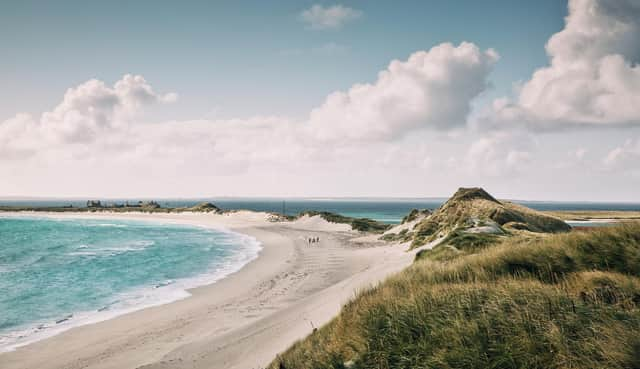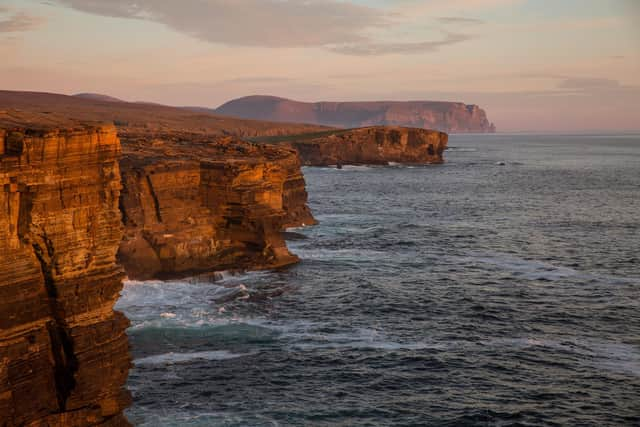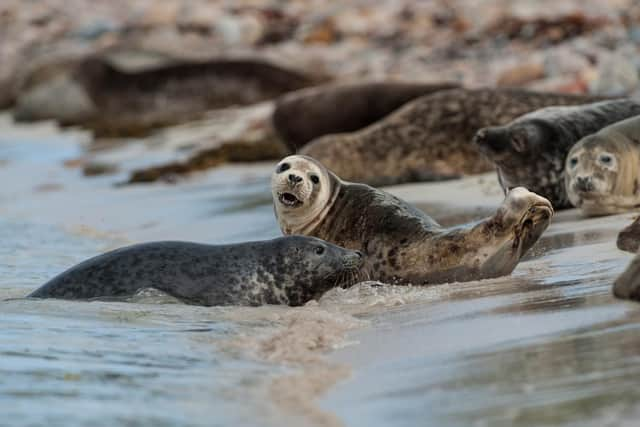Find your space in Orkney’s land of discovery


You’ll feel a pressure drop on these fascinating isles, where the secluded beaches and dramatic coastlines cleanse and revive, the wildlife makes wonder and the landscapes intrigue and surprise. Life moves in a different fashion here, and you’ll be glad you came.
The islands – and there are around 70 that make up the archipelago – are full of contrast, not least as the fast moving weather and seasons forever bring change.
There are many ways to explore Orkney. Its low lying terrain makes it perfect for walkers, with miles of rolling countryside and stunning seascapes to enjoy.


For those in a car, a day will take in much of the top draws on the mainland but there is no real rush. It’s well worth extending your holiday to explore everything the islands have to offer – there’s just so much to see.
Orkney goes at its own pace, and you will too. The mainland can be described as an island of two halves. In the west, the Atlantic-facing coast is full of searing cliffs, cascading waves and drama while the east, in the hands of the North Sea, feels more gentle with pretty sandy bays and miles of dune.
Together, they make one remarkable place that is built for relaxation, fresh air and an enriching experience.
Most of your time will be spent outside and, wherever you want to go, a trip to Yesnaby where the red sandstone sea cliffs, known locally as the Horse Tooth Stones, that proudly defy the seas and winds of the Atlantic, will give you an instant feel for the Orkney story.


Senses will come alive in the face of the ocean, which has for millennia shaped this side of the island. One of the star features it has left behind is Yesnaby Castle, a two-legged sea stack that stands firm against the unstoppable force of the driving waves.
On a clear day, you may even see the Old Man of Hoy, which some say is the big brother of Yesnaby. At your feet, you might be lucky to find Scottish Primrose or Primula Scotica, with Yesnaby one of the few places it grows in the world during May and in the summer months.
North of Yesnaby and you’ll find another wonder – Marwick Head, which takes you again deep into Orkney’s relationship with the sea. Here you will find a mile stretch of sheer cliffs with a walk here an experience that lingers long in the memory.
Keep your eyes on the sky during the autumn months when the islands are on a flight path for migrating birds. Redwings, bramblings and flocks of waders are often present, as well as Slavonian grebes, barnacle geese, waxwings and even whooper swans.
Orkney has a variety of RSPB reserves that offer perfect locations and hides to spot some of the passing populations. Marwick Head is one of those reserves and provides a magnificent coastal wildlife experience where binoculars are a must.
History remembered
Here you will also see the Kitchener Memorial which was built to commemorate the war leader who was among those drowned in the HMS Hampshire in 1916.
More recently, Orcadians raised money for a memorial wall where the names of all the sailors who also drowned, many of them islanders, are etched.
With this tragedy remembered and facing the ocean that took them all, there can be no more powerful way to remember them.
Four miles further north round the coast is another fascinating expression of how the sea has made life here – the Brough of Birsay, a tidal island that was once home to Picts and Vikings. It is separated from the mainland at Birsay – where Orkney’s Earls and Bishops once lived – by a causeway, which can be crossed at low tide.
Here the colours of the sand the rocks and the sea come together in a beautiful calming island palette. Stop and take some time on the beach, where sea birds and seals play, and look for rare cowrie shells, known locally as groatie buckies, which are said to bring luck to their finders. They would make a perfect piece of Orkney to take home.
Peaceful havens
Over on the east, there are plenty of havens to be found for a day of peace and calm.
At Dingieshowe, part of thin isthmus that connects Deerness with St Andrews, you’ll find a double crescent of golden sands cusped by dunes with stunning views towards Copinsay and the mainland.
Down in South Ronaldsay, which is easily accessible from the mainland by the Churchill Barriers, you’ll find the Sands o’Wright, which are among Orkney’s finest. The drive down is worth the trip alone, with the shoreline coming into view as you head down the hill to the access point.
The headland at Hoxa climbs to the west, and you can sit back to take in views towards the tiny hamlet of Herston and the southern approach to Scapa Flow.
If you are searching for absolute bliss, you could head to the island of Sanday for a day or two, which you can reach using Orkney Ferries or by air from Kirkwall.
The island has a population of around 500 and is also home to possibly the most spectacular stretch of sand in Orkney, the beach and dunes at Tresness.
A wonderful natural environment is created by this thin peninsula, which splits a sheltered tidal bay and the North Sea, with beautiful white sands and huge dunes bridging the two.
You will most likely be the only ones here – and you can simply relax and enjoy your own space. Now, that is hard to beat.
Discover more here